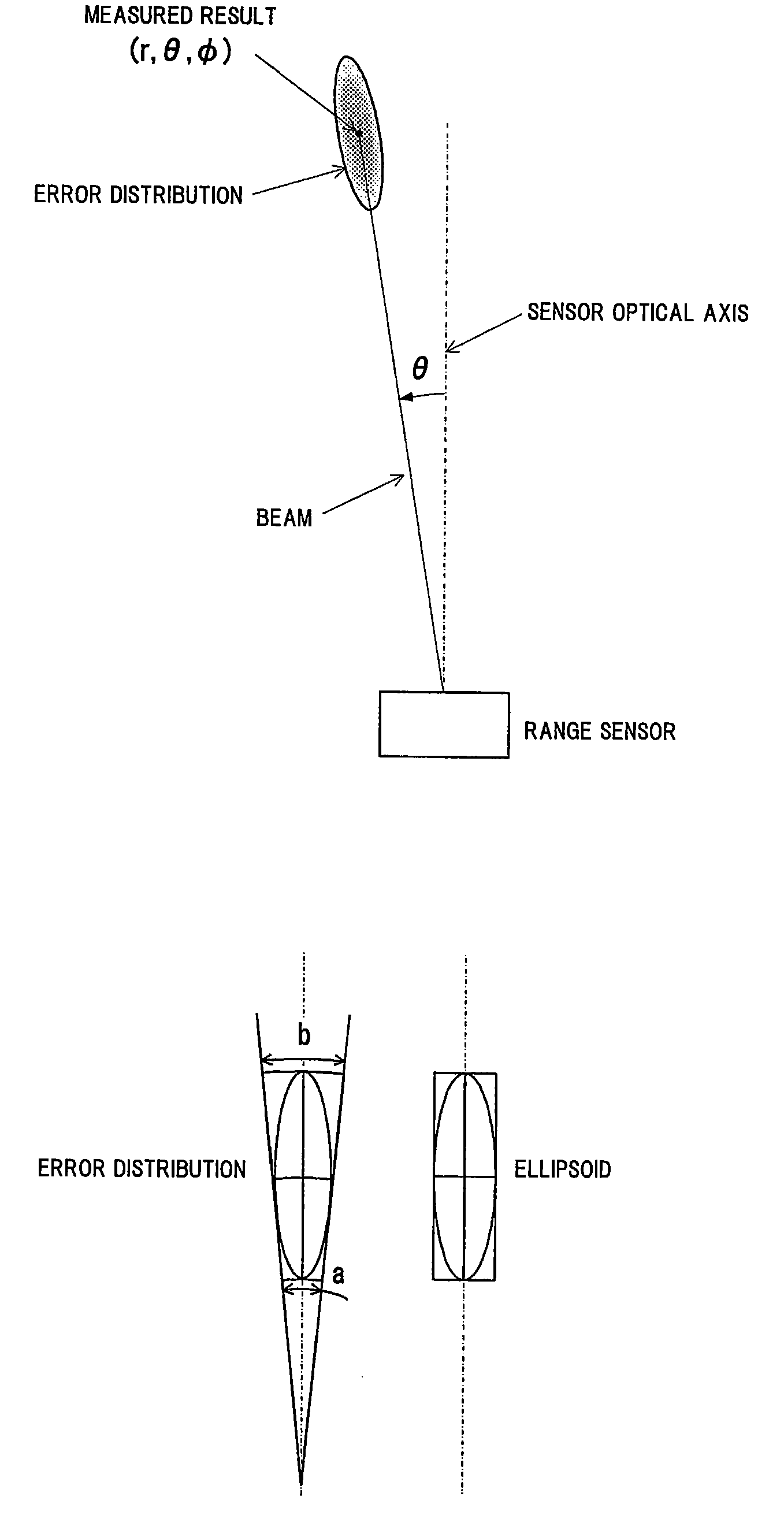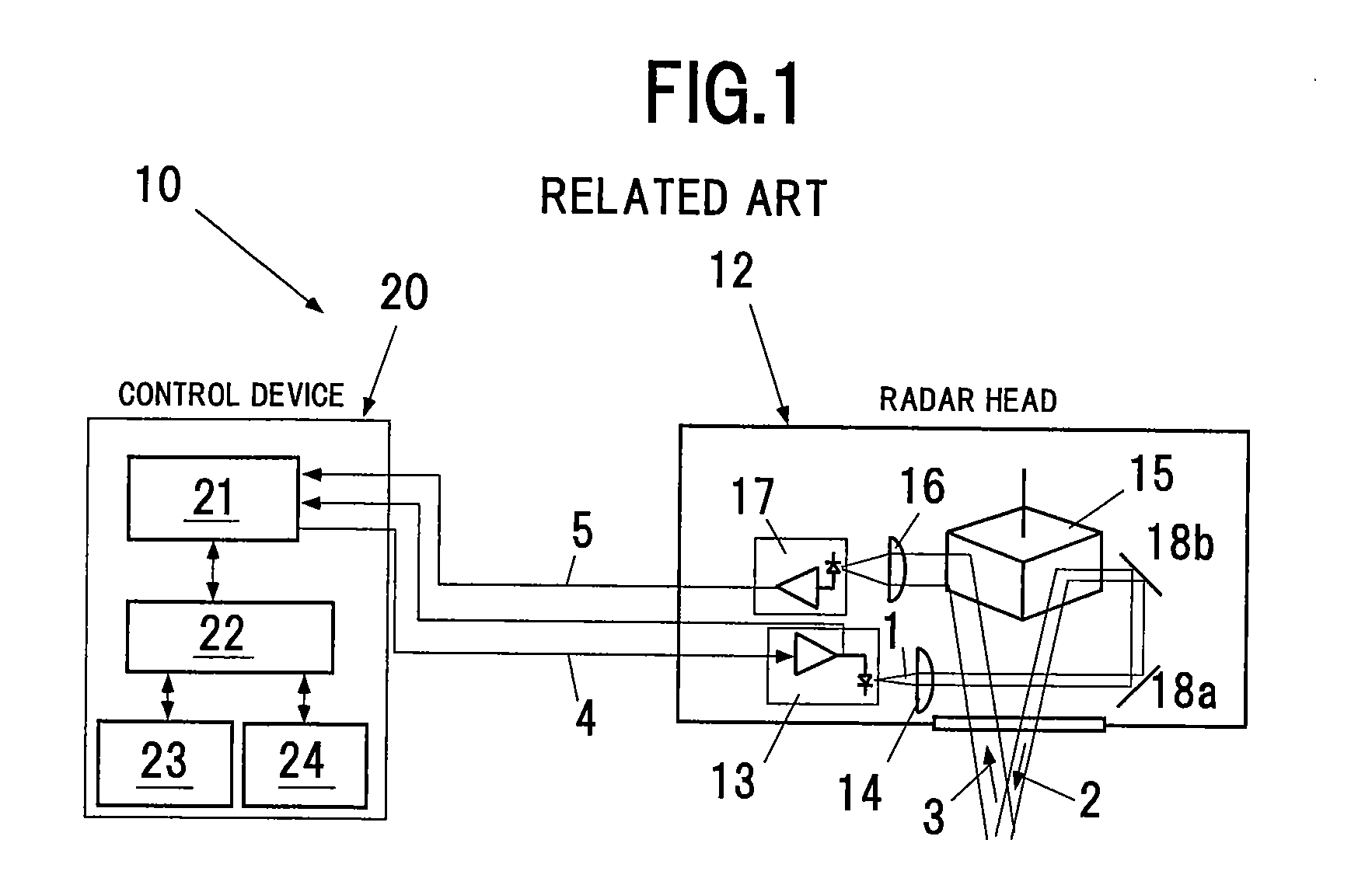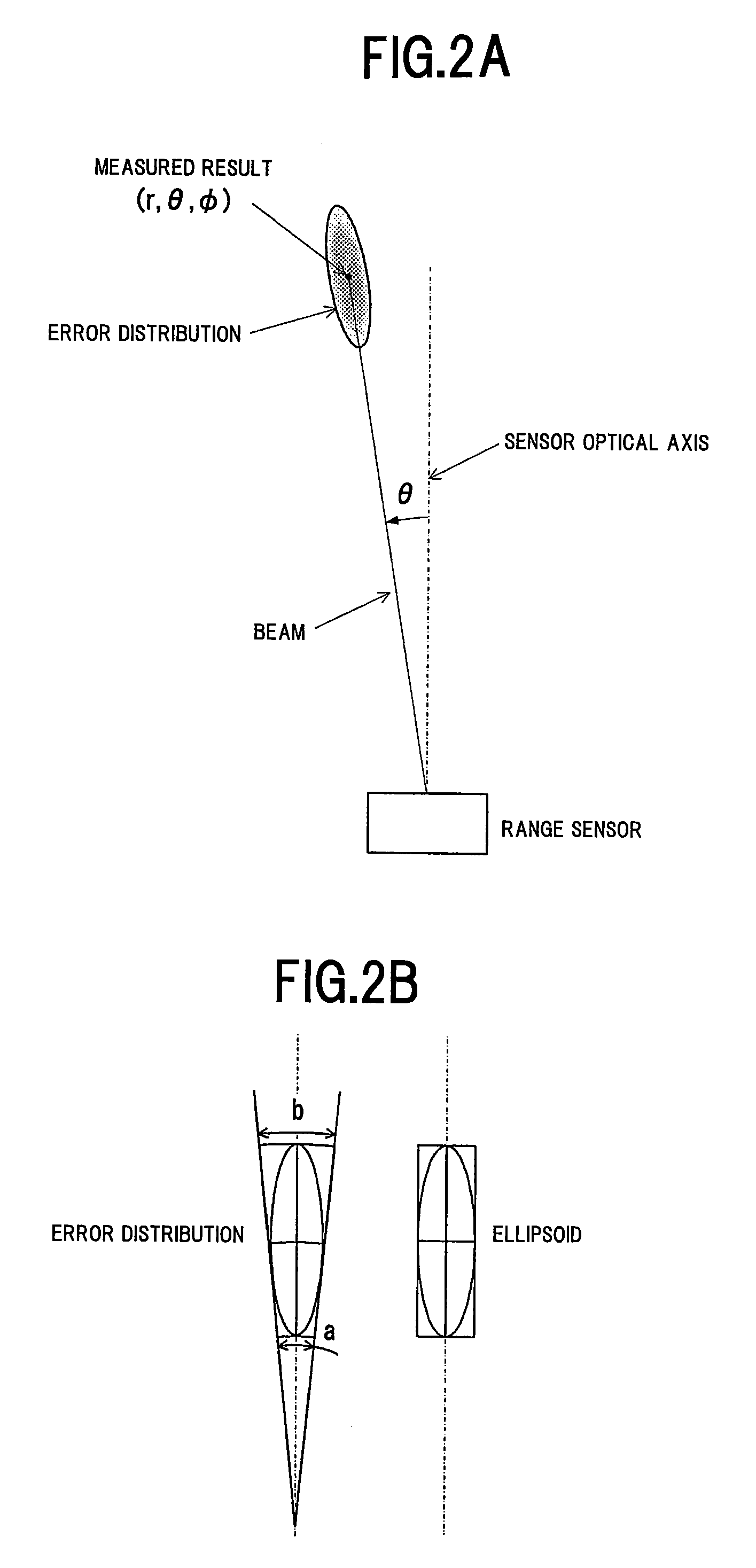Three-dimensional shape data position matching method and device
a three-dimensional shape and position matching technology, applied in image data processing, instruments, reradiation, etc., can solve the problems of inability to measure the back surface of the object, limited precision of positional relationships, and limit the size of the object to be measured, etc., to achieve accurate position matching without cumulative errors, low calculation amount, and large error
- Summary
- Abstract
- Description
- Claims
- Application Information
AI Technical Summary
Benefits of technology
Problems solved by technology
Method used
Image
Examples
Embodiment Construction
[0099]A preferred embodiment of the present invention will be explained below with reference to the drawings. Note that in each drawing, common portions are assigned same reference numeral, and redundant explanations are omitted.
[0100]FIG. 1 is a structural diagram of a three-dimensional laser radar as one example of a range sensor. A three-dimensional laser radar is disclosed in, for example, non-patent document 3.
[0101]As is illustrated in the drawing, the three-dimensional laser radar 10 is structured from a radar head 12 and a control device 20. A pulse laser beam 1 generated from a laser diode 13 is shaped into a collimated beam 2 by a projection lens 14, is scanned in two-dimensional directions by mirrors 18a and 18b and polygon mirror 15, which rotates and swings, to illuminate the object to be measured. The pulse laser beam 3 that is reflected from the object to be measured is focused by photo receiver lens 16 via the polygon mirror 15, to be converted into an electrical sig...
PUM
 Login to View More
Login to View More Abstract
Description
Claims
Application Information
 Login to View More
Login to View More - R&D
- Intellectual Property
- Life Sciences
- Materials
- Tech Scout
- Unparalleled Data Quality
- Higher Quality Content
- 60% Fewer Hallucinations
Browse by: Latest US Patents, China's latest patents, Technical Efficacy Thesaurus, Application Domain, Technology Topic, Popular Technical Reports.
© 2025 PatSnap. All rights reserved.Legal|Privacy policy|Modern Slavery Act Transparency Statement|Sitemap|About US| Contact US: help@patsnap.com



